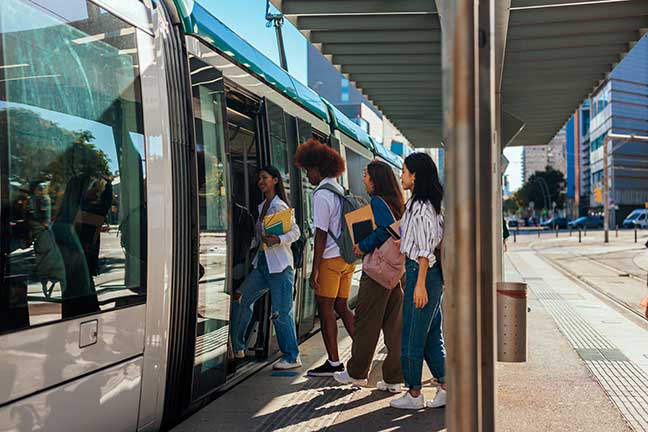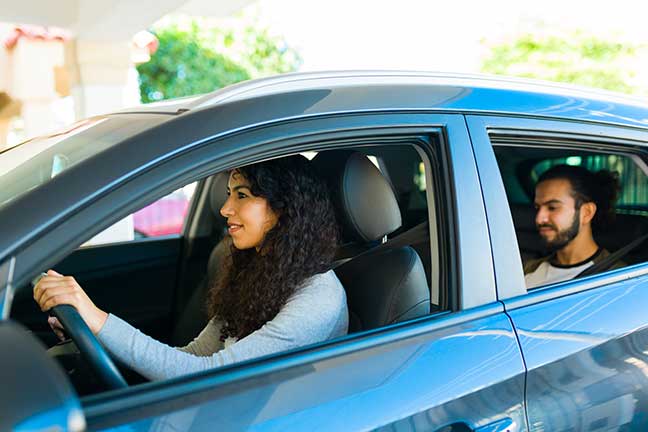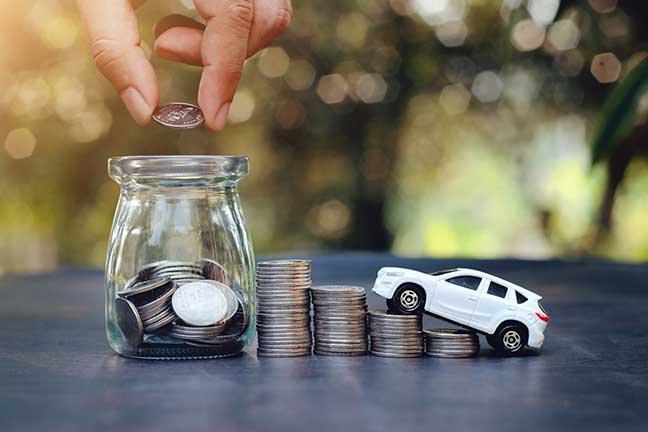Saving money on transportation is easier than you think. From high gas prices and expensive vehicle payments to other basic car maintenance and car insurance costs, getting around really puts a dent in your budget. But you don’t have to shell out a small fortune just to get from point A to point B. With a couple simple changes to your routine, you can keep more cash in your wallet and still make it to work, run errands, or take that road trip you’ve been dreaming about.
The important thing is looking for ways to optimize your current transportation situation before making any big investments in another vehicle. Whether you mostly drive, take public transit, bike, or walk, this blog post explores tips to help you trim your transportation costs so you can spend your money on the things that really matter or just keep it in your bank account to save.
Compare Transportation Options and Costs
First — compare insurance costs & car payments vs public-transit & ride-sharing. Essentially, compare every transportation option and their prices.
Measuring all the choices where you live and choosing the most budget-friendly options for each trip can dramatically cut your costs. A couple extra minutes planning your route could save you hundreds a month. Some ideas:

Use Public Transportation to Save
Public transit is one of the best ways to reduce costs on your daily commute.
Train or Bus Instead of Driving
Taking the public bus or subway can save you hundreds a month at the gas station and in parking fees. Do some research to find the routes and schedules in your area. You may be surprised how extensive many transit systems are these days.
Buy a Monthly Pass
If you use transit regularly, look into monthly or annual passes. They provide unlimited rides for a fixed price, often with a discount over paying individual fares each time. Some employers or schools even offer subsidized or free transit passes as an employee benefit.
Avoid Rushes
When possible, travel before or after the peak morning and evening rush hours. Fares could be higher sometimes during the busiest times, and trains and busses are more crowded, uncomfortable, and prone to delays as well.
Discounts
Many transit systems offer reduced fares for students, seniors, disabled riders or low-income individuals. Check if you qualify for any discount programs. Some credit cards also provide statement credits or rewards points for transit purchases.
Using affordable public transit is an eco-friendly way to save money while reducing stress and wear-and-tear on your vehicle. Give it a go on your next trip across town or to work – your wallet and the planet will thank you!

Rideshare and Carpool When Possible
Another way to reduce costs on transportation is to share the ride whenever you can. Whether it’s carpooling to work or school, or using a ridesharing service for errands and nights out, reducing single-occupancy vehicle trips can save you a bundle.
Carpool with co-workers or classmates
If you have a regular commute to the office or school, organize a carpool. Take turns driving with people who live near you and have a similar schedule. You reduce your fuel costs by half (or more) and may even be able to use the HOV lane to save time.
Ridesharing services
Ridesharing services like Uber and Lyft are ideal for shorter trips around town when public transit isn’t convenient. Instead of paying full fare for a solo ride, use their shared ride options like Uber Pool or Lyft Shared. You’re matched with other riders traveling in the same direction and split the cost. Savings could reach up to 50% compared to a regular ride
Save on parking fees
In many cities around America, parking fees make up a significant portion of transportation costs. When you carpool or use ridesharing, you automatically reduce your parking fees or eliminate them altogether. Check if any local lots or garages offer discounts or validated parking for ridesharing to save even more.
Reducing single-occupancy vehicle travel is one of the most effective ways to trim your transportation budget. Whether you commute to work or school, run errands around town or go out for a night on the town, look for opportunities to rideshare whenever possible.
Plan Ahead and Book Early for Travel Deals
Planning ahead and booking travel in advance is one of the best ways to save money on transportation costs. When you book early, you have more options to choose from and often find the best deals.
Compare Fares and Carriers
Check multiple travel booking sites like Kayak or Expedia and compare fares across airlines, bus companies and train lines. Sometimes budget airlines like Frontier or Spirit offer lower fares if booked 4 to 6 weeks before your trip. Check if you can find coupon codes or promo deals for additional savings on the carrier’s website.
Be Flexible With Your Dates
If your schedule allows, traveling midweek (Tuesday-Thursday) or non-peak days can often save you money. Weekends, holidays and summertime usually have higher demand and pricier fares. Even flying in and out a day or two earlier or later sometimes results in savings. The more flexible you are, the less you’re paying.
Look for Package Deals
Bundling your flight, hotel and rental car into a vacation package can frequently lower the overall cost versus booking separately. Packages also simplify your planning by handling the logistics.

Maintain Your Vehicle for Optimal Gas Mileage
Maximizing your gas mileage means more savings on transportation. To maximize your gas mileage, it’s important to keep your vehicle well maintained. Performing regular tune-ups and service will ensure your vehicle is running as efficiently as possible.
Check Your Air Filter
A dirty air filter reduces airflow to your engine and reduces gas mileage by up to 10 percent. Replace your air filter every 12,000 to 15,000 miles for the best performance. An air filter is an easy and inexpensive fix that can improve your gas mileage.
Keep Your Tires Properly Inflated
Under-inflated tires can lower gas mileage by 0.2%-0.4% for every 1-2 PSI drop in pressure of all four tires. Check your tire pressure regularly and inflate to the vehicle manufacturer’s recommended levels. Proper tire pressure also ensures even tire tread wear and handling.
Change Your Oil Regularly
Fresh motor oil reduces friction and helps your engine run more efficiently. Follow the manufacturer’s recommendations for oil change intervals. For most vehicles that’s every 5,000 to 7,500 miles.
Avoid Idling
Idling reduces your gas mileage and pollutes the atmosphere. Turn off your vehicle when idling for more than a few seconds, such as at traffic lights. Avoid excessive warm-ups. Most vehicles only need 30 seconds to warm up before driving.
Observe The Speed Limit
Aggressive driving like speeding and quick braking lowers your gas mileage by up to 33 percent at lower speeds and 5 percent at higher speeds. Observe the speed limit and avoid aggressive driving to achieve the best gas mileage.
Saving Money on Transportation? Save on Your Phone Bill!
If you’re trying to travel for less, we have some good news: EASY Wireless is offering even more ways to save some money! Such as providing FREE Phones with unlimited data.
Because of government connectivity programs such as Lifeline & ACP, you could receive some incredible perks. Such as:
EASY Wireless Unlimited Plan
- FREE Unlimited Data
- FREE Unlimited Talk
- FREE Unlimited Text
- FREE SIM Card Kit and Activation
- Choose to Keep Your Number or Get a New One
To start with EASY Wireless, apply online by clicking the below:
Start Saving Today!
Start Saving Today!
Or you can come to one of the EASY Wireless’s retail stores, where our customer service agent will help you apply for your benefits.


